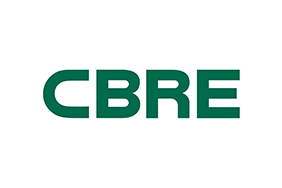Technology’s Role in Achieving ESG Targets
With technology’s increasing footprint within our built environment today and in the future, CBRE’s Su-Fern Tan and Taronga Ventures’ Julian Kezelman explore its true potential in the ESG space.
Published 04-01-24
Submitted by CBRE Group, Inc.

Technology forms the fabric of everything humans interact with, including their built environment.
At the Property Council of Australia’s first Technology Summit in Sydney, CBRE’s Phil Rowland underscored the importance of harnessing the potential of technology to shape the diversity of our future surroundings.
“It's important that we make our industry more productive, our places and precincts more relevant and inclusive to our tenants and the public. This involves making our buildings more intelligent, softening the footprint on our environment and developing the capabilities that we'll need in the future to thrive in a technological society.”
Today’s technology is already being used to reach some of the boldest ESG (Environmental, Social and Governance) targets today by proactive building operators.
It’s a scenario in which Julian Kezelman, Innovation Director at Taronga Ventures, and Su-Fern Tan, Pacific Head of ESG at CBRE, understand the true potential of. During their Technology Summit keynote, the duo explained how technology was being used to maximise the ESG impacts on the built environment.
Technology’s role in ESG strategy
As the case for reaching net zero takes precedence across the commercial property sector, there’s been increasing demand for ESG solutions amongst clients, investors and tenants.
“We help them understand what that strategy looks like and then develop the roadmap to get there,” says Tan.
“Take property management for example. I can spend time in front of a BMS trying to diagnose a building and how we can run it more efficiently, but how scalable is that?
“With technology, I can analyse 200 buildings in a day, so it’s about trying to scale that impact. I think the role that technology plays when it comes to delivering sustainability is about scale, data and integration.”
The current client demographic for supporters of ESG and technology is diverse, ranging from the tech savvy through to those who are completely foreign to the concept. Their priorities commonly revolve around energy, water and waste efficiencies.
“Energy efficiency is essentially the old sustainability game that's becoming more mature. We're now starting to talk about water efficiency, waste, embodied carbon, and nature repair. It’s all interconnected, interdependent and getting pretty complicated, and underneath all of this lies the data.”

CBRE Group, Inc.
CBRE Group, Inc.
CBRE Group, Inc. (NYSE:CBG), a Fortune 500 and S&P 500 company headquartered in Los Angeles, is the world’s largest commercial real estate services and investment firm (in terms of 2013 revenue). The Company has approximately 44,000 employees (excluding affiliates), and serves real estate owners, investors and occupiers through approximately 350 offices (excluding affiliates) worldwide. CBRE offers strategic advice and execution for property sales and leasing; corporate services; property, facilities and project management; mortgage banking; appraisal and valuation; development services; investment management; and research and consulting. Please visit our website at www.cbre.com.
More from CBRE Group, Inc.

